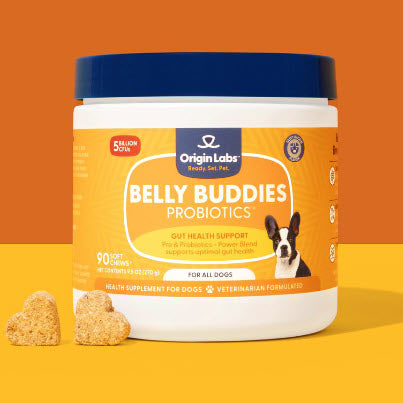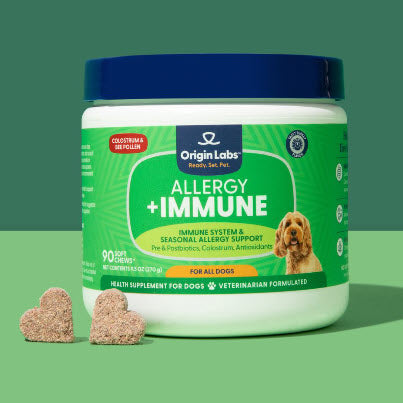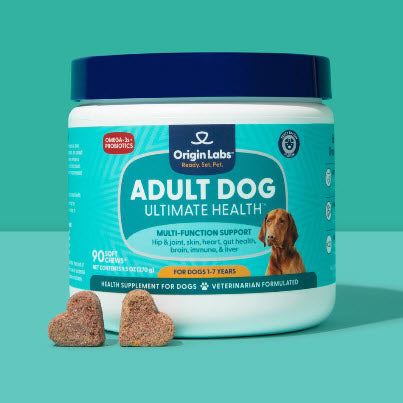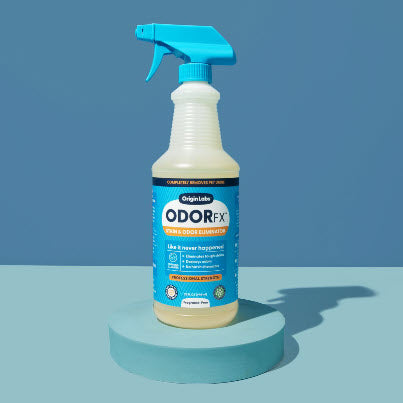Can Dogs Eat Nectarines? Understanding the Safety and Health Considerations
Pet owners often wonder if it's safe for their dogs to eat nectarines. They want to know if this juicy fruit can be a tasty and healthy snack for their furry friends. While it's natural to want to share delicious human foods like nectarines with our pets, we need to be mindful of their specific dietary needs and any potential risks involved.
Are Nectarines Safe for Dogs?
Nectarines are not inherently toxic to dogs, yet they come with a set of safety guidelines and potential health concerns:
- Sugar Content: Nectarines have natural sugars that could affect your dog's health if consumed in excess.
- Pit Hazards: The pits contain cyanide and pose a choking risk.
- Digestive Issues: Some dogs may have sensitive stomachs or existing health conditions that could be exacerbated by eating nectarines.
The Importance of Moderation and Individual Factors
As with any new food you introduce to your dog's diet, moderation is key. While a small amount of nectarine flesh is generally safe for most dogs, it's important to consider the following factors:
- Size and Breed: Smaller dogs may be more sensitive to the sugars in nectarines, while larger dogs may be able to tolerate them better.
- Underlying Health Conditions: If your dog has diabetes, obesity, or any other health issues, it's best to consult with your veterinarian before offering them nectarines.
- Allergies or Sensitivities: Dogs can develop allergies or sensitivities to certain foods over time. If your dog has never had nectarines before, start with a small amount and monitor them closely for any adverse reactions.
How to Safely Feed Nectarines to Your Dog
If you've considered these factors and still want to give your dog a taste of nectarine, here are some guidelines to follow:
- Remove the Pit: Make sure to remove the pit before offering any nectarine to your dog. The pit poses a choking hazard and contains cyanide, which is toxic to dogs.
- Cut Into Small Pieces: Cut the nectarine into small, bite-sized pieces to make it easier for your dog to chew and digest.
- Offer in Moderation: Limit the amount of nectarine you give to your dog and incorporate it as an occasional treat rather than a regular part of their diet.
- Monitor for Digestive Issues: After giving your dog nectarine for the first time, keep an eye out for any signs of digestive upset such as vomiting or diarrhea. If these symptoms occur, discontinue feeding nectarines and consult with your veterinarian.
In Summary
Understanding these considerations is vital for owners thinking about introducing their pets to dogs eating nectarines. Before you decide to share this juicy treat, it's important to be fully informed about both the benefits and risks involved.
2. The Nutritional Value of Nectarines for Dogs
When it comes to understanding the nutritional benefits of nectarines for dogs, it's important to know that these juicy fruits are packed with essential nutrients. Many of these nutrients can help improve a dog's overall health.
1. Vitamin A
Vitamin A, which can be found in nectarines, is known to support eye health and strengthen the immune system. Dogs, just like humans, require this vitamin for optimal health. It helps keep their skin healthy, promotes bone growth, and assists in reproduction.
2. Vitamin C
Another important nutrient is Vitamin C, an antioxidant that can aid dogs in fighting harmful free radicals. Vitamin C also contributes to collagen production, which results in healthier skin, fur, and joints.
3. Fiber
The fiber content in nectarines is also worth considering. While dogs may not need as much fiber as humans do, it still plays a significant role in their diet. Fiber helps maintain a healthy digestive system by adding volume to the dog's stools and promoting regular bowel movements.
While these vitamins and minerals found in nectarines can be beneficial for dogs, they should not be seen as a substitute for a balanced dog diet but rather as a supplement. It's also crucial to remember that nectarines have a high sugar content, so they should only be given as an occasional treat.
Now that we've covered the nutritional benefits of nectarines for dogs, let's take a closer look at some potential risks associated with feeding your furry friend this sweet fruit.
3. Potential Risks of Feeding Nectarines to Dogs
While nectarines can be a sweet treat for your furry companion, there are several potential risks associated with dogs eating nectarines that pet owners should be aware of. These concerns range from the immediate dangers posed by the hard pits to the more subtle long-term health effects of sugar consumption.
High Sugar Content and Its Impact on Dogs' Health
Nectarines, like many fruits, contain natural sugars which can have a range of effects on a dog's health if consumed in large amounts:
- Weight Gain: Dogs consuming excess calories from sugary fruits may gain weight, potentially leading to obesity.
- Blood Sugar Levels: For dogs with diabetes or prediabetic conditions, the sugars in nectarines can cause spikes in blood glucose levels.
- Dental Health: Sugars can contribute to dental problems in dogs, including tooth decay and gum disease.
The Dangers of Nectarine Pits
The pit of a nectarine presents multiple dangers for dogs:
- Cyanide Toxicity: Nectarine pits contain compounds that can release cyanide when ingested. Although the amount is small, it poses a significant risk if the pit is chewed or broken down.
- Choking Hazard: The size and shape of nectarine pits make them a choking risk for dogs.
- Intestinal Blockage: If swallowed whole, a pit could cause an intestinal obstruction requiring surgical intervention.
Choking or Intestinal Blockage from Nectarine Flesh or Skin
Aside from the pit, other parts of the nectarine can also pose risks:
- Choking Risk: Large pieces of fruit flesh or skin could obstruct a dog's airway.
- Digestive Distress: Dogs may experience gastrointestinal upset from eating too much nectarine flesh or skin due to its fiber content.
Contamination and Pesticide Residue Concerns
Non-organic nectarines may be coated with pesticides and other chemicals harmful to dogs:
- Pesticide Residues: These chemicals could cause an array of health issues ranging from mild gastrointestinal upset to more severe toxic reactions.
- Contaminants: Bacteria such as Salmonella can reside on improperly washed fruit surfaces, posing additional health risks.
Pet owners should ensure they fully understand these risks before introducing their dog to nectarines. While the juicy flesh might seem like a harmless treat, vigilance is needed to avoid any adverse effects on canine companions. Keeping in mind these considerations is paramount for safeguarding your pet's well-being while exploring new additions to their diet.
4. Can Dogs Have Nectarine Pits? The Hidden Danger
When it comes to dogs and nectarine pits, it's vital to understand that these pits pose a significant risk to dogs' health. Nectarine pits are rich in cyanogenic glycosides, natural compounds that, when ingested, can release cyanide into the body. This toxic substance is extremely harmful and can lead to cyanide poisoning in dogs.
Symptoms of cyanide poisoning in dogs can include:
- Rapid breathing
- Dilated pupils
- Panting
- Shock
- Death, in severe cases
A dog's size plays a critical role in determining the severity of cyanide poisoning. Smaller dogs are more susceptible to the negative effects due to their size and weight.
Even if your dog doesn't chew on the pit, simply swallowing it poses another danger - intestinal blockage. A pit stuck in a dog's digestive tract can cause severe discomfort, constipation, vomiting, and potentially life-threatening complications if not addressed quickly.
To prevent these risks:
- Keep nectarines out of your dog's reach: If you're eating a nectarine or have them stored at home, make sure they're kept where your dog cannot access them.
- Dispose of nectarine pits carefully: Don't leave pits lying around where curious dogs might find them.
Key Takeaway: Nectarine pits are absolutely off-limits for dogs because of their cyanide content. It's crucial to keep your canine companion away from nectarine seeds or pits to prevent accidental ingestion and the potential health complications that could follow.
5. How to Safely Feed Nectarines to Your Dog
Feeding nectarines to your dog requires a careful approach. Here's how you can do it safely:
Step 1: Wash the Fruit Thoroughly
Start by washing the nectarine thoroughly to remove any potential pesticide residue. This is an important step to ensure that your dog doesn't ingest any harmful chemicals.
Step 2: Remove the Pit
Next, remove the pit from the nectarine. The pit contains trace amounts of cyanide, which can be dangerous for your dog if ingested.
Step 3: Control Portion Size
The amount of nectarine you feed your dog should be based on their size and weight. Here are some general guidelines:
- Small dogs: A small slice or two is usually enough.
- Larger breeds: They can handle slightly more, but still in moderation.
Remember, moderation is key. Too much nectarine can lead to health issues due to its high sugar content.
Step 4: Slice or Mash the Fruit
When it comes to feeding methods, consider slicing the fruit into small, bite-sized pieces or mashing it up and mixing with their regular food. This makes it easier for your dog to eat and digest the nectarine without any risk of choking or intestinal blockage.
Step 5: Monitor Your Dog's Reaction
After your dog has eaten the nectarine, keep a close eye on them for any signs of discomfort or adverse reactions. Some dogs may experience digestive upset such as diarrhea or vomiting due to the sudden change in their diet.
If you notice anything unusual, stop feeding them nectarines immediately and consult with a veterinarian.
🐾 Remember: Introducing any new food into your pet's diet should be done gradually. Start with small amounts and slowly increase if there are no adverse reactions. This allows your dog's digestive system time to adjust.
Summary:
To recap, here are the key steps to safely feed nectarines to your dog:
- Wash thoroughly: Remove any potential pesticide residue.
- Remove the pit: Nectarine pits contain trace amounts of cyanide.
- Control portion size: Small slices are enough for most dogs.
- Slice or mash: Make it easy for your dog to consume and digest.
As a responsible pet owner, it's essential to know how to safely incorporate fruits like nectarines into your dog's diet. Inappropriate feeding practices can lead to severe health problems. Therefore, always consult with your vet before making any significant dietary changes.
In the next section, we will explore some safe alternatives to nectarines for dogs. Although nectarines can be a delightful treat, there are many other fruits that are just as nutritious and potentially less risky for your canine companion.
6. Alternatives to Nectarines: Other Safe Fruits for Dogs
When it comes to choosing treats for your furry friends, it's important to opt for safe fruits for dogs that not only satisfy their taste buds but also contribute to their overall health. While nectarines can be given in moderation, there are plenty of other dog-friendly fruits that make great choices and offer nutritional benefits.
Apples
- Low in fat and packed with vitamins A and C: Apples are a wonderful option for dogs. They contain antioxidants that support immune health.
- Oral hygiene perks: Chewing on apple slices can help clean a dog's teeth, leading to fresher breath.
- Remember to remove the core and seeds: These parts can be harmful due to traces of cyanide.
Bananas
- A good source of potassium: This mineral is essential for muscle and blood vessel function, as well as maintaining proper acidity levels.
- Rich in fiber: While bananas can aid digestion, they should be given sparingly due to their high sugar content.
Blueberries
- Packed with antioxidants: Blueberries are bursting with these beneficial compounds, which help fight against harmful free radicals and may lower the risk of chronic diseases.
- Perfect for training sessions: Their small size makes them an ideal low-calorie treat for rewarding good behavior.
Watermelon
- A hydrating snack: Thanks to its high water content, watermelon is a refreshing choice for keeping your dog hydrated during hot weather.
- Vitamins A, B6, and C: These nutrients play a role in supporting a healthy immune system and maintaining energy levels.
- Go seedless and rind-free: Be sure to remove all seeds and the tough outer rind to prevent any potential digestive issues.
In addition to the fruits mentioned above, here are some other nutritious options that are safe for dogs to enjoy:
Safe Fruits List:
- Pears: These provide fiber and vitamins K and C, but remember to take out the pits and seeds first.
- Peaches: Another source of fiber and vitamin A, but make sure to remove the pit due to cyanide risks.
- Mangoes: Packed with vitamins A, B6, C, and E, but always remove the pit before serving.
- Strawberries: High in fiber and vitamin C while being low in calories; however, they should be given in moderation due to their natural sugars.
- Cranberries: Occasionally fine in small quantities; too much can lead to an upset stomach.
Before adding any new fruit to your dog's diet, it's wise to do some research or consult with a veterinarian. Certain fruits may have specific preparation requirements or recommended serving sizes based on your dog's individual health needs. Understanding which fruits are safe for your dog can help provide them with essential vitamins and antioxidants – a subject explored further in this informative article on what fruits can dogs eat.
Remember:
- Introduce new foods gradually.
- Keep portions small to prevent digestive issues or weight gain.
- Remove all potentially hazardous parts such as seeds, pits, or stems before offering any fruit.
By including a variety of these suggested fruits in your dog's diet, you're not only giving them tasty snacks but also enhancing their overall nutritional
7. The Verdict: Can Dogs Eat Nectarines?
When deciding whether to include nectarines in your dog's diet, it's important to talk to your vet first. This is especially true if your dog has any specific health issues or dietary requirements. Your vet can give you personalized advice to make sure that any new food is suitable for your pet's individual health needs.
Nectarines can provide some nutrients that are good for dogs, like vitamins and fiber. However, they should only be given as a supplement to their regular meals, not as a replacement. It's crucial for dogs to have a balanced and complete diet in order to stay healthy.
Here are the main things to keep in mind when feeding nectarines to your dog:
- Consult with Your Vet: Before making any changes to your dog's diet or introducing new foods like nectarines, talk to your vet.
- Nutritional Supplement: Understand that nectarines can have some benefits for dogs, but they should still be part of a well-rounded diet.
- Moderation is Key: Be aware of the importance of controlling the amount of nectarines your dog eats to prevent overfeeding and potential health problems.
- Responsible Feeding: Always take out the pits from nectarines and make sure they are prepared properly so that there are no choking hazards or risk of cyanide exposure.
While fruits like oranges also have their pros and cons for dogs, it's all about finding the right balance and knowing what is best for your furry companion. If you want more information on similar topics, you can read articles like Can Dogs Eat Oranges? Exploring the Benefits and Risks, which provides scientifically supported advice for a healthy dog diet.
When it comes to sharing human foods like nectarines with dogs, owners need to be careful and make responsible choices. It's not just about whether dogs can eat a certain food, but also whether they should, how much is safe, and how often it should be given. By following these guidelines, you can ensure that every treat you give your furry friend is both enjoyable and safe.
FAQs (Frequently Asked Questions)
Can Dogs Eat Nectarines?
Yes, dogs can eat nectarines, but with important caveats. Though not toxic to dogs, certain safety guidelines must be adhered to when giving your dog this fruit. This is to avoid potential health risks that come with inappropriate feeding.
Key Takeaway:
Nectarines are safe for dogs to consume in moderation, but should be given responsibly and in accordance with specific safety guidelines.
Nutritional Benefits of Nectarines for Dogs
Nectarines are packed with several essential nutrients that can contribute positively to a dog's health. These include:
- Vitamin A: Crucial for a dog's overall growth, immune function, and vision.
- Vitamin C: An antioxidant that helps combat bodily damage from free radicals.
- Fiber: Aids in digestive health by promoting regular bowel movements.
Remember:
While these nutrients are beneficial, nectarines should still be considered a treat and not a replacement for your dog's regular diet.
Potential Risks of Feeding Nectarines to Dogs
While nectarines have their benefits, they also carry potential risks:
- High Sugar Content: Overfeeding your dog with nectarines can lead to weight gain and fluctuating blood sugar levels.
- Cyanide in the Pit: Nectarine pits contain cyanide which is highly toxic to dogs.
- Choking or Intestinal Blockage: The pit could pose a choking hazard or cause intestinal blockage if swallowed.
- Pesticides and Contamination: Non-organic nectarines may have pesticide residues or other contaminants which could be harmful.
Safety Tip:
Always thoroughly wash any fruits before giving them to your dog to minimize the risk of pesticide exposure.
Can Dogs Have Nectarine Pits?
It cannot be stressed enough that nectarine pits must be kept away from dogs. They contain cyanide, which is highly toxic to dogs and can cause serious health issues if ingested. Always ensure that the pit is completely removed before feeding your dog nectarines.
Warning:
Never allow your dog access to nectarine pits or seeds. If your dog accidentally ingests a pit, seek immediate veterinary care.
How to safely feed nectarines to your dog?
It is important to wash nectarines thoroughly, remove the pit before offering them to your dog, practice moderation and portion control, use preferred feeding methods such as slicing the fruit into small pieces or mashing it up, and monitor your dog for any adverse reactions after eating nectarines.
What are some alternatives to nectarines for dogs?
Safe alternatives to nectarines for dogs include apples, bananas, and blueberries. Always remember to remove any seeds, pits, or stems from these fruits before giving them to your dog.
What is the verdict on dogs eating nectarines?
Readers are encouraged to consult with their veterinarian before adding nectarines or any new food to their dog's diet. While nectarines can offer nutritional value, they should never be a substitute for a balanced diet. Caution and responsible ownership are urged when sharing any human food with dogs.








